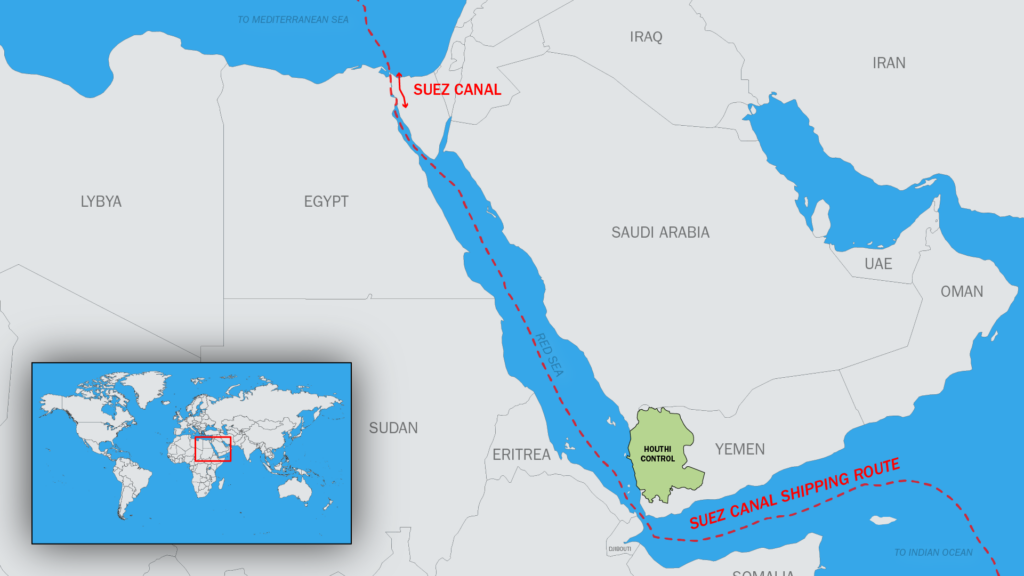Houthi attacks have put the global supply chain at risk. Here’s how the world economy is responding.
Authors: Reece Hooker DOI: 10.54377/3cb7-2fe4
Commissioning Editor, 360info
The deaths of three seafarers on a merchant ship in the Gulf of Aden marks the first fatalities since the Houthis began attacking trading corridors in and around the Red Sea in November.
The Yemen-based Houthi rebels joined the fray in support of Hamas as it contends with Israel’s all-out assault on Palestine.
The response from outside has been fast and lethal. Militaries from all over have descended on the region to defend the trade corridor.
The United States and United Kingdom are leading airstrikes aimed at disrupting and weakening the Houthis. India has at least a dozen warships in the region, the European Union is offering a fleet while navies from Singapore and Sri Lanka are joining the fight to defend trade.

The Suez Canal shipping route is one of the most important trading arteries in the world.
So far, the disruptions have not plunged the world into economic turmoil. Instead, shipping companies are using alternate routes and managed to find ways to limit price rises to moderate levels, relative to what they could have been.
360info has consulted the experts to explain what happens next and what the shipping industry can do to better prepare for a shifting geopolitical climate.